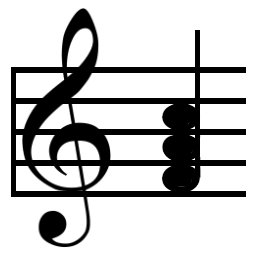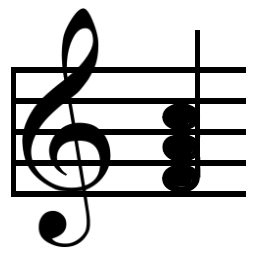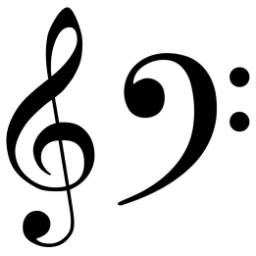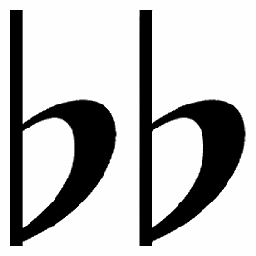A chromatic key is described as the pitch of a tone measured in vibrations per second or the pitch range of a scale, instrument, or composition, that range being the distance from the primary keynote to it's octave up or down the scale. Enharmonic is the identical tone or chord included within a different key or scale.
A chromatic interval is described as the number of steps between tones, a step being the distance of pitch from one tone of the scale to the next or the distance between two notes of a scale and on the staff. The interval (third, fifth, octave, etc) is merely a method of separating and identifying that distance of tones or chords between the different keys
Introduction - A Unique Musical History by RDBuras is not a reference manual. It is a story about the historical growth and development of music written from the author's unique point of view.
A descriptive listing of the staves with illustrations. The musical staff is constructed of 5 horizontal lines separated by 4 spaces used for the placing of the symbols of musical notation of the major and minor scaling systems.
They say that music imitates life. Sometimes it’s the other way around. We all know of various connections our music has with the things around us. Some things just happen naturally and can readily be interpreted as song. Perhaps the rustle of the wind through the trees might be heard as applause for the voice of the songbirds..
A descriptive listing of all Clefs including illustrations. A clef is placed at the beginning of the first measure of the staff indicating the pitch of the instrument for which the music is written.
It would seem that Primitive music has always been here. No one can say for sure just when, where or how people first started making music. It undoubtedly stemmed from the very things we do today to amuse ourselves. Tapping a foot or clapping hands have always been a means of musical expression.
The time signature, also called a meter signature, is placed after the clef and indicates the number of beats per measure by the top numeral while the bottom numeral indicates to which notes to apply that value. The example shown shows a meter of 4 beats per measure with the quarter note taking a full beat.
Just as primitive people drummed, sang and danced, the mood of the ancient ruled world was just as anxious to entertain themselves. They were now beginning to realize that they were actually making music and it felt good to be heard. It was the Greeks who first studied and experimented with the science of sound to any depths around the year 500 BC.
The key signature is placed after the time signature indicating the key or pitch range of the scaling system for the appropriate instrument with a series of sharp or flat signs. Depending upon the key, the signature could contain one or several sharp or flat symbols. See also Keys and Chords for key breakdown, assignment, and reference.
We've been singing in churches, synagogues, and temples since the beginning of religion. The musical styles of biblical days was actually Ancient music. It was there but its sound has mostly faded to a mystery to modern man. The people of biblical times drank wine, danced and sang. Music was indeed a happy part of daily life for many during biblical days.













